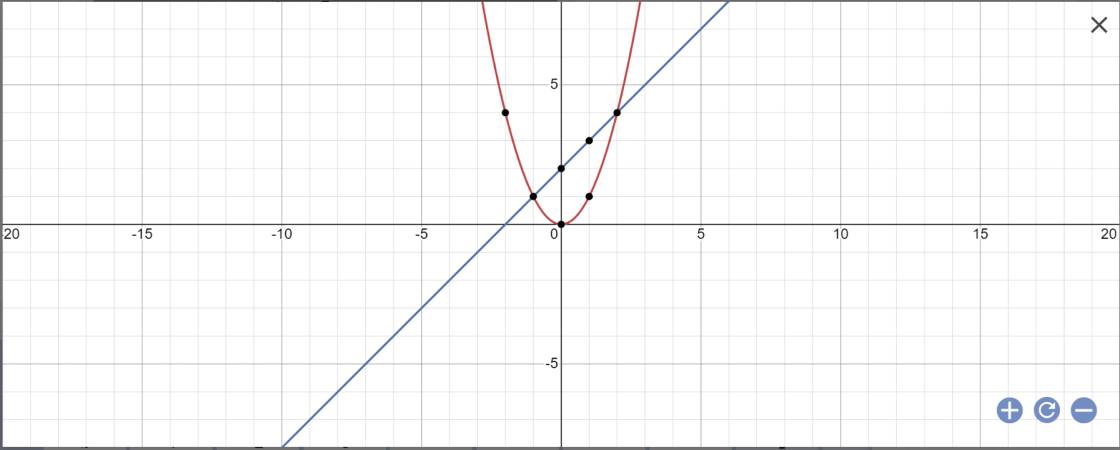Hãy nhập câu hỏi của bạn vào đây, nếu là tài khoản VIP, bạn sẽ được ưu tiên trả lời.

b: A(1;1) B(-2;4)
\(M\left(x;x^2\right)\)
Theo đề, ta có: MA=MB
\(\Leftrightarrow\sqrt{\left(x-1\right)^2+\left(x^2-1\right)^2}=\sqrt{\left(x+2\right)^2+\left(x^2-4\right)^2}\)
\(\Leftrightarrow x^2-2x+1+x^4-2x^2+1=x^2+4x+4+x^4-8x^2+16\)
\(\Leftrightarrow6x^2-6x-18=0\)
\(\Leftrightarrow x^2-x-3=0\)
\(\Delta=\left(-1\right)^2-4\cdot1\cdot\left(-3\right)=13>0\)
Do đó: Phương trình có hai nghiệm phân biệt là:
\(\left\{{}\begin{matrix}x_1=\dfrac{1-\sqrt{13}}{2}\\x_2=\dfrac{1+\sqrt{13}}{2}\end{matrix}\right.\)
Vậy: \(M\left(\dfrac{1-\sqrt{13}}{2};\dfrac{7-\sqrt{13}}{2}\right);M\left(\dfrac{1+\sqrt{13}}{2};\dfrac{7+\sqrt{13}}{2}\right)\)

Tọa độ giao điểm là:
\(\left\{{}\begin{matrix}x^2+x-2=0\\y=x^2\end{matrix}\right.\Leftrightarrow\left\{{}\begin{matrix}\left(x+2\right)\left(x-1\right)=0\\y=x^2\end{matrix}\right.\)
=>A(1;1); B(-2;4)
Tọa độ trung điểm I là:
\(\left\{{}\begin{matrix}x_I=\dfrac{1+\left(-2\right)}{2}=\dfrac{-1}{2}\\y_I=\dfrac{1+4}{2}=\dfrac{5}{2}\end{matrix}\right.\)

\(S=\dfrac{3}{1.4}+\dfrac{3}{4.7}+...+\dfrac{3}{43.46}\\ =1-\dfrac{1}{4}+\dfrac{1}{4}-\dfrac{1}{7}+...+\dfrac{1}{43}-\dfrac{1}{46}\\ =1-\dfrac{1}{46}\\ =\dfrac{45}{46}\\ \Rightarrow S< 1\)

a: 
PTHĐGĐ là:
x^2-x-2=0
=>(x-2)(x+1)=0
=>x=2 hoặc x=-1
Khi x=-1 thì y=(-1)^2=1
Khi x=2 thì y=2^2=4
b: Để y=(m-1)x+m+n trùng với y=-2x+1 thì
m-1=-2 và m+n=1
=>m=-1 và n=1-m=1-(-1)=2
giúp em vs